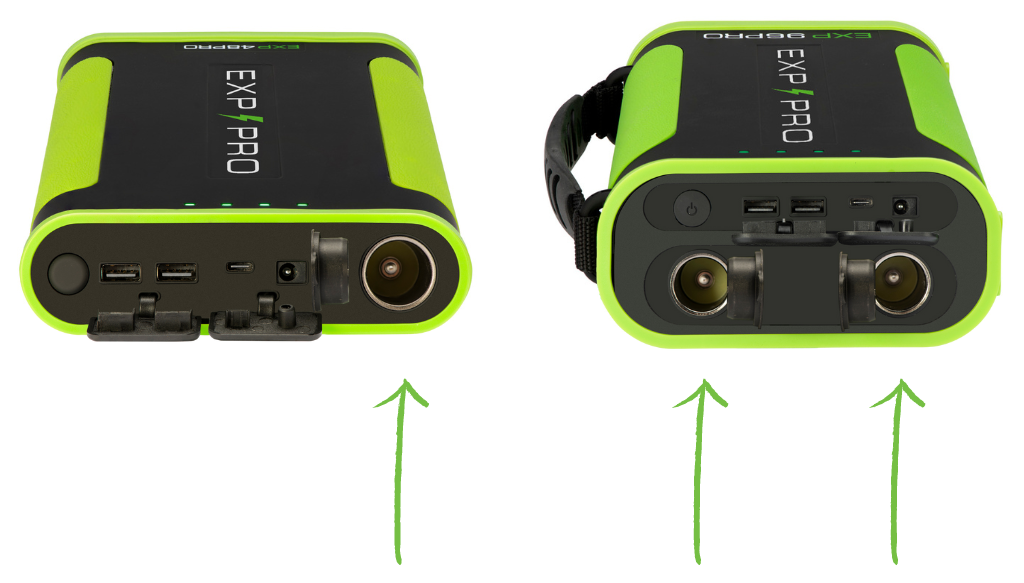
Using an Inverter vs. Direct DC Power
In the CPAP world, how you power your machine matters. And unless you’re familiar with electrical current and how it applies to running machines like a CPAP, it can get confusing on which battery is really the best option.
CPAP batteries can be divided into 2 general categories, those with a built-in AC plug and those with a built-in DC plug. Batteries that offer the typical AC (alternating current) plug use the type of outlet you would find and use in your home like the ones below. These batteries are all designed with inverters built into their systems.

Batteries that offer DC (direct current) plugs are like those you would find and use in a car like the two EXP PRO Batteries you find below. These batteries are designed without inverters built into their systems.

Interesting fact - CPAP machines actually run on DC power. When choosing a portable battery, those offering DC plugs are most efficient.
Now let’s put this into some context. When your CPAP machine is plugged into a normal AC wall plug, there is a built-in converter in the middle of that cord. That converter manipulates the AC power coming from the wall outlet into the DC power needed to run that CPAP machine. During this process extra power is used for converting that power from AC into DC. Heat is also produced in this process. You can actually feel the heat coming from that converter in the middle of the power cord when it’s in use. Another cord you might be familiar with, that has that same converter, is a laptop.
Inverters work in the same manner as converters. They use energy to change its power form, except instead of converting AC to DC, they convert DC to AC. It’s worth noting that this process also produces heat. While the batteries that offer AC plugs and have the built-in inverters do provide a convenience, it comes at a cost. They use battery cell energy (up to 40%) just to invert the form of power, and it produces excess heat within the unit. Heat can have damaging effects on battery cells, so typically there is also a fan in these batteries that will also be drawing battery power in the process to keep things cool. It’s not a very efficient process, and if any part of the inverter or fan fails, you’re left with a dead battery.

EXP PRO Batteries do not have built-in inverters, making them extremely efficient, safe, reliable, and last up to 10 times longer. The EXP48PRO can power a CPAP for 2-3 nights, and the EXP96PRO can power a CPAP for 4-6 nights using a DC power connection. Most CPAP machines have a DC power cord option, so they can be plugged directly into the battery and not incur any power loss associated with an inverter.

A pure sine wave inverter produces similar quality power as the electricity you get from a standard wall outlet (cleaner, smoother, quieter, and more reliable electricity to operate sensitive electronics). Many portable power stations use “modified sine save”, which creates rough peaks and dips in voltage.

This type of erratic power can damage sensitive electronics and computer chips found in CPAP machines as well as other devices. If a portable battery or power station does not say, “Pure Sine Wave” on it, then you can be fairly certain it’s not.

While there are a number of options for portable power on the market today, and every company and consumer is able to choose what works for them, EXP PRO is committed to providing a safe, non-toxic battery that will perform for years.

Did you know that you can parallel connect EXP PRO batteries together to increase your capacity? Check out the process on how and why someone would want to parallel connect two batteries together.
Check out this post on Instagram to see how others utilize this battery.



Leave a comment